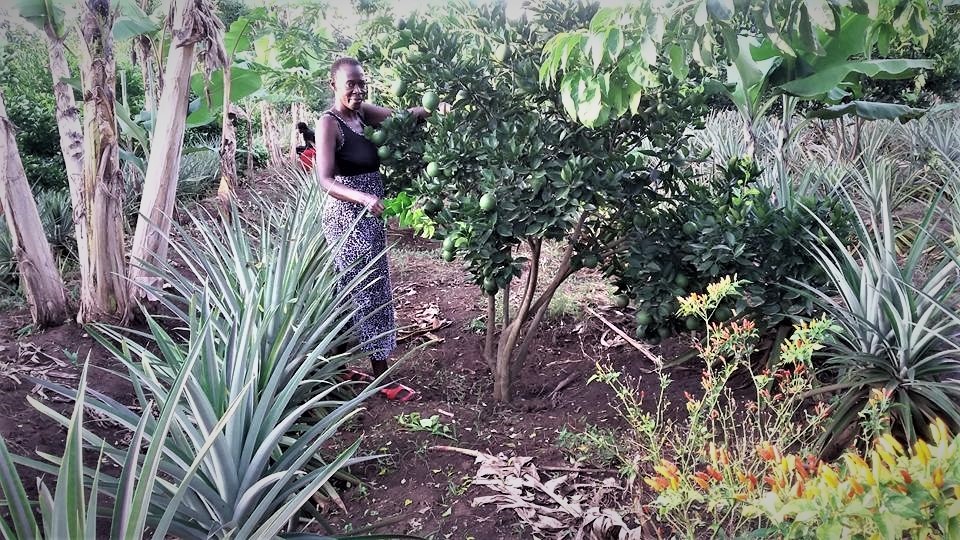“They would eat the same type of food daily such as cassava and beans but men were not happy to eat it. Whenever women would serve the same kind of food to their husbands who were coming back from drinking sprees, they would tell them to take away their rubbish (food) which had no side dish”
Tam Apira Disabled Farmer Field School Group
Farmers no longer have to borrow food to cater for visitors who visit their homes. That shame is now a thing of the past when they would go begging to borrow food from the few individuals in their community who had had enough food, so assert the members of Tam Apira Disabled Farmer Field School (FFS).
According to them, farmers have enough quantities of food to eat at home and they have surplus food items which they sell, in order to generate income to pay for school fees and catering for medical treatment of household members.
The income that they generate, according to them, has also enabled farmers to hire labour and buy improved seeds. This ensures that increased production levels are sustained, the testified. Income from sale of crops, according to them, has also enabled farming households to buy assets like bicycles, goats and cows which increased their wealth.
Shortage of food was causing children to steal people’s food items, they shared; and apparently, there were many cases of fighting in the homes. Household members had insufficient energy to work in their own gardens as they would eat little quantities, they testified; adding that there were frequent illness among children, but all this has changed.
Now, according to them, children rarely fall sick as they eat adequate quantities and a variety of food items – their bodies are strong. Cases of children stealing people’s food, apparently, have stopped. In 2009 food items available to the households were limited to sorghum, cassava, millet, beans, and pigeon peas, they shared.
Now, according to them, the range has increased and it includes cassava, beans, maize, millet, sweet potatoes, rice, sesame, groundnuts, pigeon peas, cow peas and vegetables like eggplants, onions, tomatoes, sukuma wiki. Eggs, meat, fish are also frequently eaten, they shared. And added that they now change diet and are able to make a side dish of beans, greens, peas to accompany the main food and sauce which was not possible in 2009.
This is the story of Tam Apira disabled Farmer Field School (FFS) group. The group was formed in 2009; and has a total of 30 members (19 women and 11 men).
Under the CPAR Uganda Farmers First programme, the farmers were trained on agronomic practices (seed bed preparation, plant spacing, line planting, timely weeding, integrated pest and disease control, fertiliser application), vegetable production, seed selection and post harvest handling.
They adopted improved varieties for maize, sesame, sunflower, groundnuts, and soya beans. It is now the norm for the crops to be planted in lines, unlike before when the seeds were broadcast. It is now practice that the crops are weeded on time and in case of the maize some application of fertiliser and spraying to control pests is done on time.
The members’ adoption of these practices has contributed to increased their average production. By 2013, production had increased from an average of 20 kilograms of sesame to 480-600 kilograms and 280 kilograms of maize to 900 kilograms of maize.
Photo credit: Ruth Apili, at her home fruit and vegetable gardens, in Lira in Lango in Northern Uganda.


2 responses to “Farmers First project improving food security”
Great learning of your noble program and I would love to express my interest to collaborate through sharing innovative farming skills and experiences with other farms.
Looking forward to the great time together..
Truly
Joseph Male
0755215075
LikeLike
She real mastered the agro forestry practices which is the only currently tool for fighting food insecurity in our local communities and I have real loved the design of landscape which looks so beautiful but with food in stock. I encourage CPAR Uganda to go a head to teach more farmers this practice and in case of help as former student of agro forestry class we are available to give support for the capacity building of our community. For God and my country.
LikeLike